| Day | Activity | Overnight Stay |
|---|---|---|
| 1 | Arrive in Hanoi, city tour | Hanoi |
| 2 | Transfer to Sapa and guided tour | Sapa |
| 3 | Guided tour of Sapa rice fields & villages - Bus back to Hanoi | Hanoi |
| 4 | Ha Long Bay cruise | Cruise boat |
| 5 | Ha Long Bay cruise - Bus to Hanoi - Flight to Ho Chi Minh City | Ho Chi Minh City |
| 6 | Day trip to Vietnam War Museum and Cu Chi Tunnels | Ho Chi Minh City |
| 7 | Ho Chi Minh City tour | Ho Chi Minh City |
| 8 | Day trip to Mekong Delta | Ho Chi Minh City |
| 9 | Flight to Siem Reap | Siem Reap |
| 10 | Cambodian countryside and floating villages | Siem Reap |
| 11 | Angkor Wat | Siem Reap |
| 12 | Angkor Wat - Flight to Phu Quoc | Phu Quoc |
| 13 | Beach day at Phu Quoc | Phu Quoc |
| 14 | Beach day at Phu Quoc | Phu Quoc |
| 15 | Flight to Hanoi - Goodbye tour | Hanoi |
| 16 | Flight back home | Home sweet home |
Day 1: Hanoi
Most good travels start with a long flight, and this is no exception. We landed in Hanoi at 7am, and at 9am we were on the rooftop terrace of our hotel, for a well deserved breakfast.
In the quick two hours we had our first contact with the Vietnamese culture. The driver was trying hard to speak English and showed us a few things on the way. The roads were busy and the crossroads chaotic - "Made in Vietnam" as the driver told us smiling. All these, along with the hospitality of the hotel staff, gave us the feeling that we would find out more about the world than what we planned for.
Hanoi feels like a city that is constantly on the move. It is home for about 8 million people and it has everything from the old quarter with narrow streets, to green parks and to fancy shopping malls.
A lot of people are cooking and eating in the street. In the evening, they gather for food and drinks around very small tables on the sidewalk. This is probably the most typical Vietnamese imagery. On the sidewalks, in the middle of the streets, in parks, everybody is selling something: snacks, fruits, clothes, bike rides, etc.
As a European, you instantly feel a cultural difference, but at the same time you feel welcome. You might also need to re-learn how to cross the street (we had our 1-minute training at the hotel reception). Keep a steady pace, don't stop and don't run, and try to make eye-contact with the people riding the motorcycle.
Recommended activities:
- Walk around the old quarter, absorb the atmosphere
- Stop at a local restaurant for some pho and spring rolls
- Head to Hoan Kiem Lake and Ngoc Son Temple
- Visit the Ho Chi Minh Mausoleum
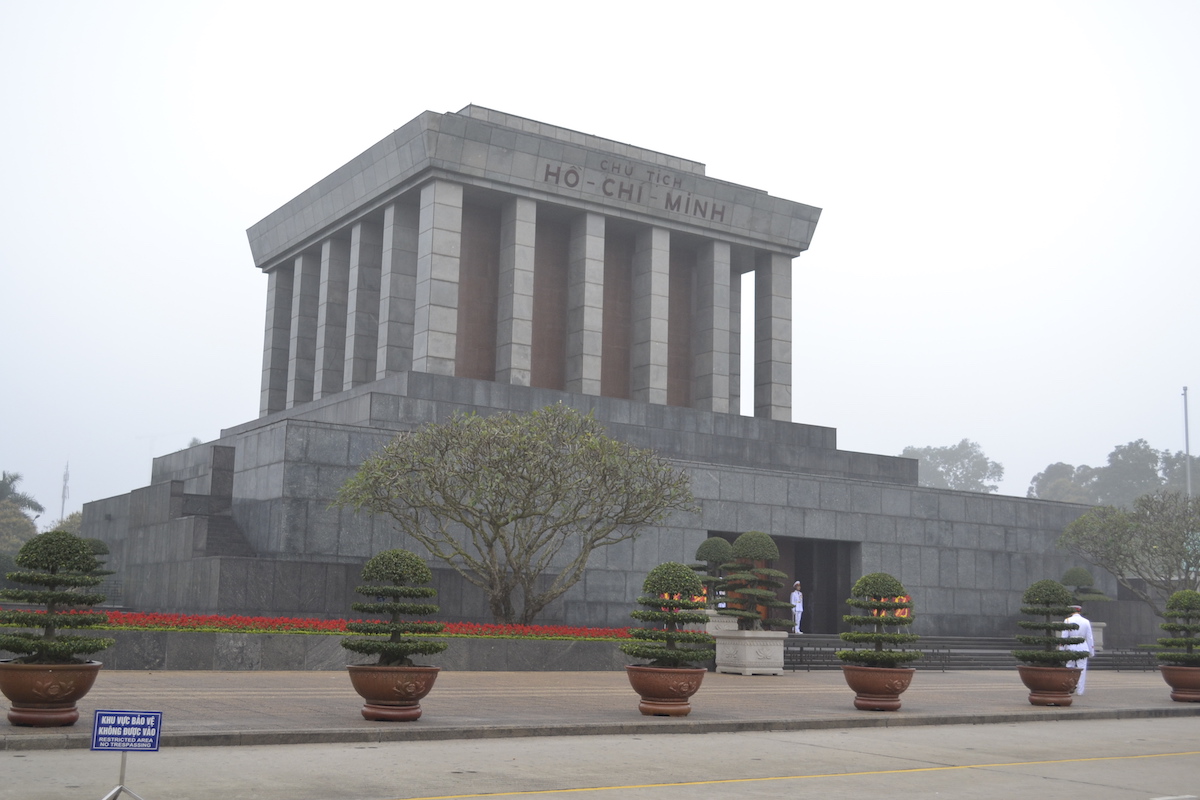
Days 2-3: Sapa
After spending our first day in Hanoi, we left the city for a two-day visit to rural Vietnam, in the mountainous region of Sapa. The landscape is beautiful, packed with never-ending rice fields and terraces. But what impressed us most was the local culture and diversity. You can read more about the experience in Sapa in our spotlight article.
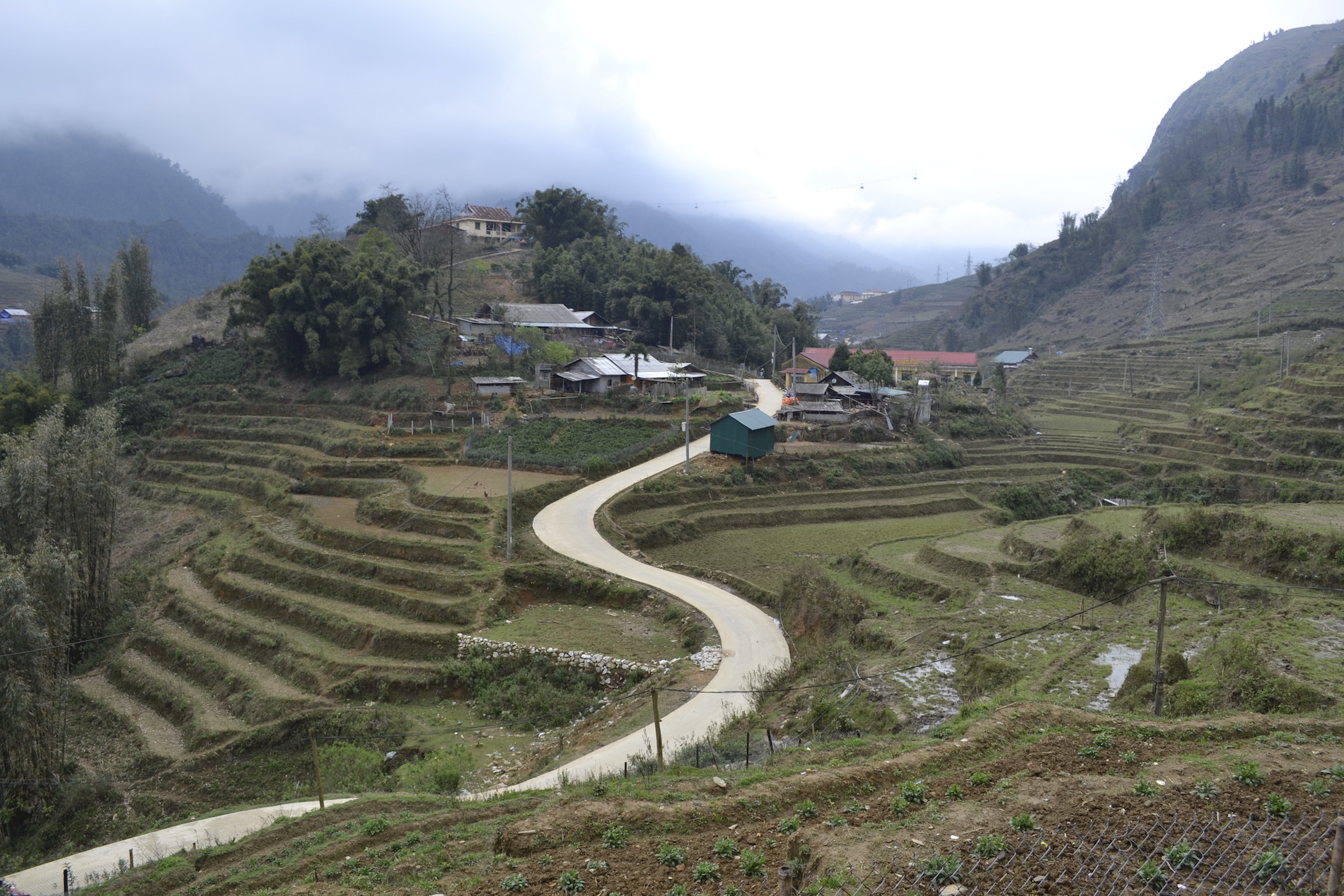
Days 4-5: Ha Long Bay
The trip to Sapa was booked ahead of time, when we were back home. But for Ha Long Bay, we did the booking on the spot, with the help of the hotel staff in Hanoi. They recommended a local agency and helped us decide between the various options. Keep in mind that everything is negotiable in Vietnam, so do your homework before booking a trip :)
Most of the tours in Vietnam offer all the bus transfers and meals, and this was no exception. After a few hours of driving towards the coast, we reached Ha Long Bay and boarded our cruise for the next two days. As soon as we left the port, we understood why Ha Long Bay is the most visited sight in the entire country.
Besides enjoying the landscape, we did a few hikes on some of the bigger islands and we had several activities organized by the crew. We did some kayaking around the lovely Tra Bau area, even if it was the first time we tried that together and we had a hard time synchronizing our strokes. Also, we attended a spring rolls cooking lesson and a Vietnamese tea ceremony. They were both fun and informative.
The road back to Hanoi was again pretty busy, and it was followed by a crowded flight to Ho Chi Minh City.
Days 6-9: Ho Chi Minh City
We landed quite late, but from the very beginning we could tell that Ho Chi Minh City is very different from Hanoi. Formerly called Saigon, it is known for its role in Vietnam War, and also for its French colonial past. After the french withdrawal from Vietnam, Saigon was the capital of South Vietnam, while Hanoi was the center of power in North Vietnam.
The city is home to 8 million people and has a mixture of old colonial buildings and modern skyscrapers. We spent four days in and around HCMC. We took some time to enjoy the city, but also to understand more about the war, albeit from the Vietnamese perspective, and to take a quick tour of the rural area in the Mekong Delta.
War Remnants Museum & Cu Chi Tunnels
After spending our previous days outside the city, our apetite for culture was high. So we hopped on a guided full-day trip to the historic center of Ho Chi Minh City and to the famous Cu Chi Tunnels.
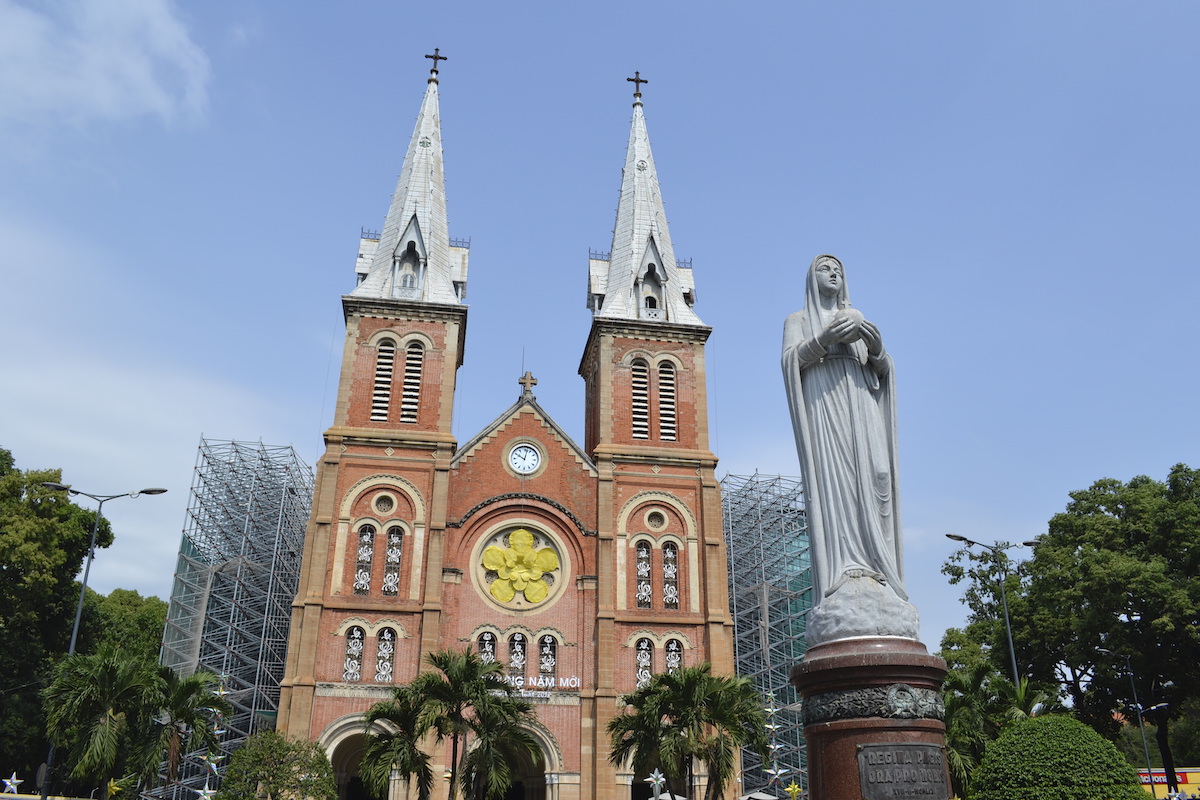
The tour covered the Notre Dame Cathedral and a 19-th century post office built during the French period. The Reunification Palace and the War Remnants Museum followed, and were really impressive. They painted a grim picture about the horrors of the American War in Vietnam - as it's called throughout the museum.
The visit to the museum is very educational. You learn about the context in which everything started, and about the main events during the war. We expected the exhibits to be more biased, but were pleasantly surprised by the fact-based explanations. They presented how each party viewed the war and how that influenced its course. Also, a lot of famous photos from the Vietnamese and foreign press were being exhibited. Although it's a very sad experience, we loved the optimistic vibe at the end. Without doubt, they managed to get past the war, even if its consequences are still visible.
Our next stop was outside the city, at the vast underground network of tunnels in the Cu-Chi district. During the heavy fighting, the Viet Cong troups used the tunnels for pretty much everything. Life was happening inside the tunnels. They even had some "rooms" they used as schools. We were able to enter in one of the tunnels (one of the larger ones), and were struck by how small they actually were. It's definitely not an experience for claustrophobic people, but if you can physically do it, we recommend it.
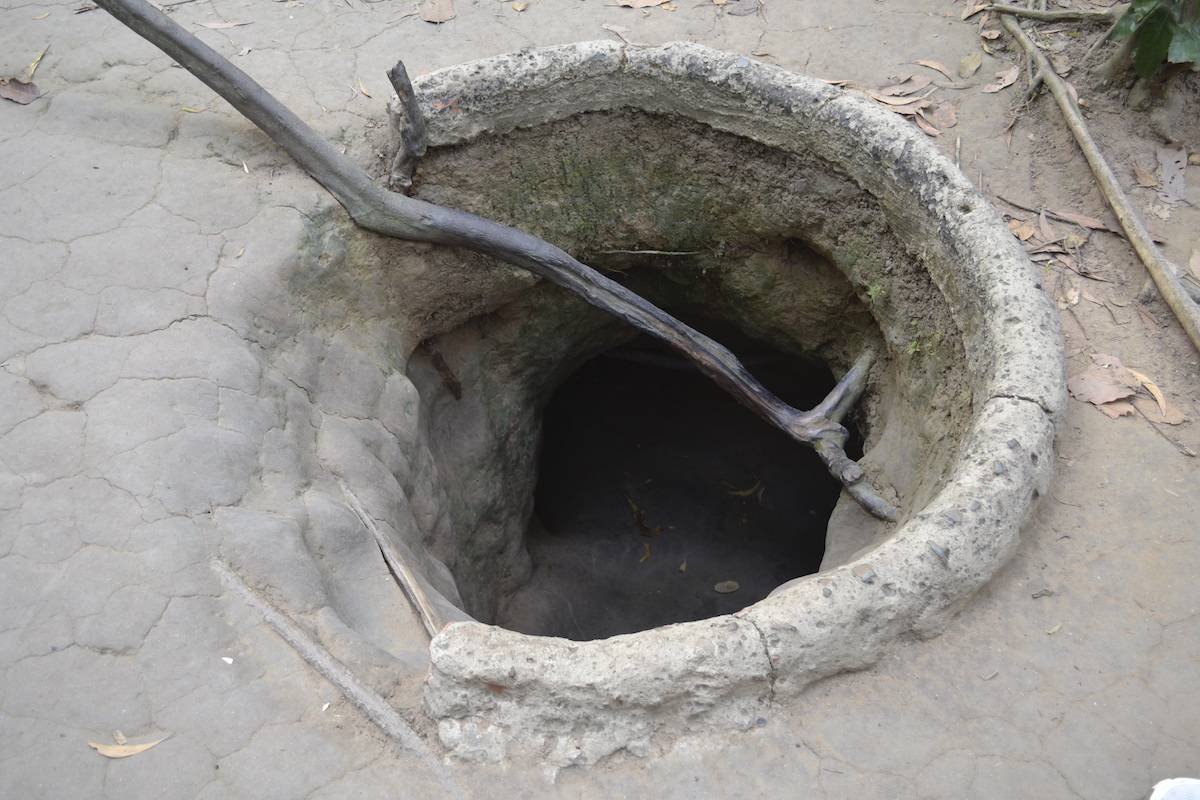
One activity you can't do in other places is to shoot a few bullets with an AK-47 used during the war. It was the first time we shot a gun, so starting with an automatic one was not the wisest decision (although it was safe). Also, hearing shots from the range while walking inside the tunnels adds to the overall experience.
Visiting the city
After getting a glimpse of the city in the first day, it was now time to feel its vibe. We started with a very good Vietnamese coffee at Trung Nguyên Legend Café (a local chain), then we explored the old part of the city and absorbed the specific south Vietnamese culture. We did not miss the Ben Thanh Street Food market, with its variety of colors and smells.
HCMC is also crowded, but it's better spaced compared to Hanoi. The wide boulevards (a legacy of the French colonial times), the big squares and the large buildings make it clear that the city is the financial capital of the country.
The city is alive, both during the day and the night. The area around People's Committee of Ho Chi Minh City is especially crowded during the evening. It seems to be "the walking place" for a lot of youngsters and families alike. One thing to notice, when comparing the North and the South, is that people in HCMC have a more entrepreneurial spirit and talk more about the economy, while the North cares more about politics. Clearly a legacy of the 20 years the country was split in two.
Mekong Delta
The next day we got up early in the morning for a day trip to the rural Mekong Delta. We booked this tour the previous day from a local company in HCMC. By the way, there are tons of agencies and they offer the same services, so you don't need to bother with pre-booking your trips before arriving. Also keep in mind that everything is negociable here, so you can always get better offers in person than online.

Our tour started with the Vinh Trang Pagoda, a famous Buddhist temple that has three huge statues of Buddha. Then, the trip continued by boat over the Tien River to the Qui (Tortoise Islet), followed by a cruise on the Bao Dinh canal. We also had a stop at the Ben Tre province. It's called "the land of coconuts", a perfect place to buy (and eat) a lot of coconut candies - they are awesome.
Last but not least, we took a short trip on a traditional rowing boat on one of the small canals.

Days 10-12: Cambodia
So after visiting the two major cities in Vietnam and the rural area around them, we took an evening flight to Siem Reap, Cambodia. Siem Reap is the gateway to Angkor Wat, one of the most famous sights in South-East Asia.
Cambodia is a much smaller country. It was devastated in the late 70s by the brutal regime of the Khmer Rouge. It is estimated that from 1975 until 1979, the regime killed close to 2 million people, which was about a quarter of the population. The country is slowly recovering from this period, but its scars are still visible.
It is widely known that the most unpleasant experience in Cambodia is at the airport. That's true, because of the queues and the forms you need to fill in, and because of the unfriendly police officers at the border. Once we put this behind us, the entire Cambodian experience was amazing and the people were some of the friendliest we ever met.
The climate is very hot and humid in March, and there are a lot of insects and small animals all over the place. Still, the hotel was the cleanest we had in our entire trip. Also, we had a car booked to drive us to the hotel, and the driver was the most cheerful man.
Siem Reap countryside
We contacted a local agency a few days before arriving, so the next day we hoped on a bus for a tour of the rural areas around Siem Riep. Our guide, John, was a local Cambodian guy in his early twenties, highly knowledgeable and super friendly. He explained a lot about the local culture and how things changed for them in the recent history.
Together with a small group, we biked through a village and visited the local market (and ate some goodies that John recommended). The terrain was flat, so it wasn't too difficult to push forward in spite of the heat. Along the road, we were greeted by a lot of curious children. As John explained, saying "hello" was their way of getting in contact with the tourists, even if that was all the English they spoke.
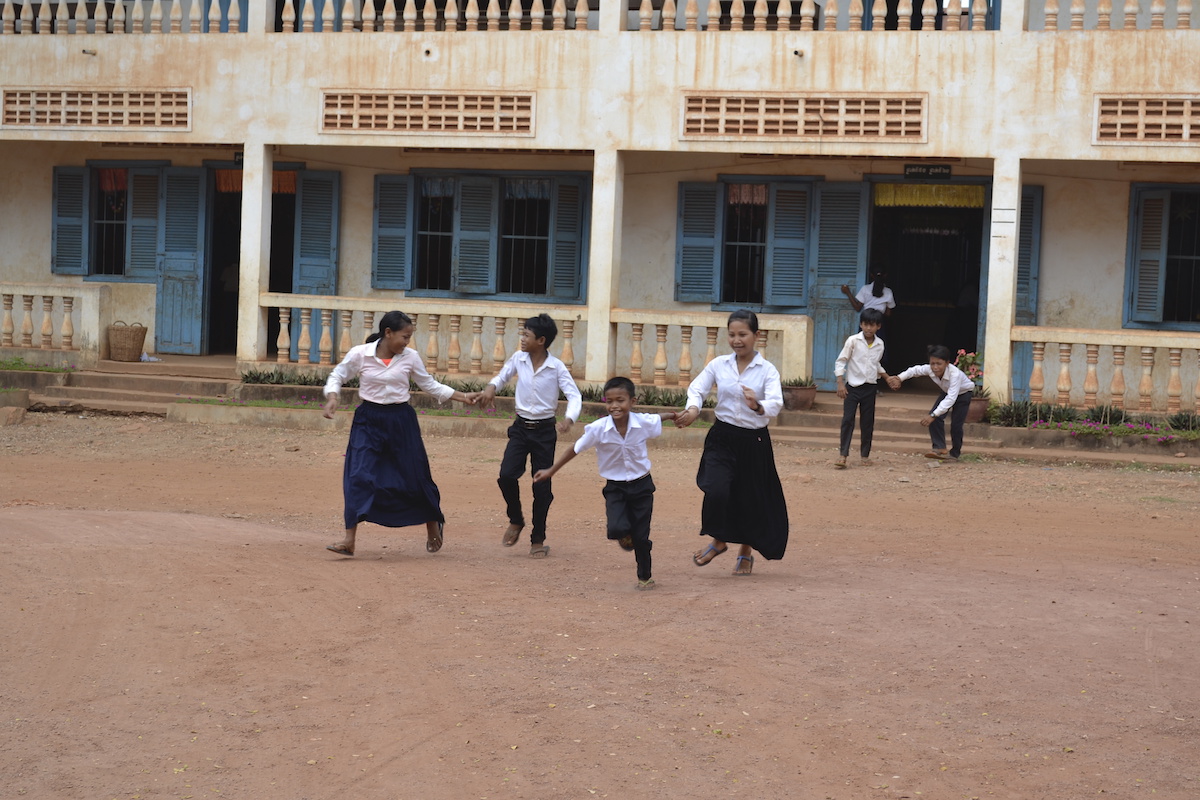
This experience was followed by the visit to Kompong Khleang, one of the floating villages on the Tonlé Sap lake, the largest body of fresh water in Cambodia. We were there in the dry season, so we started by walking on land that is covered in water later during the year. We were impressed by the fact that the water rises up to 10m during the wet season so everyone builds very tall pillar houses.
We had a traditional Khmer lunch at a local family in one of the these houses. This was followed by a boat trip down the river mouth and on the lake itself.
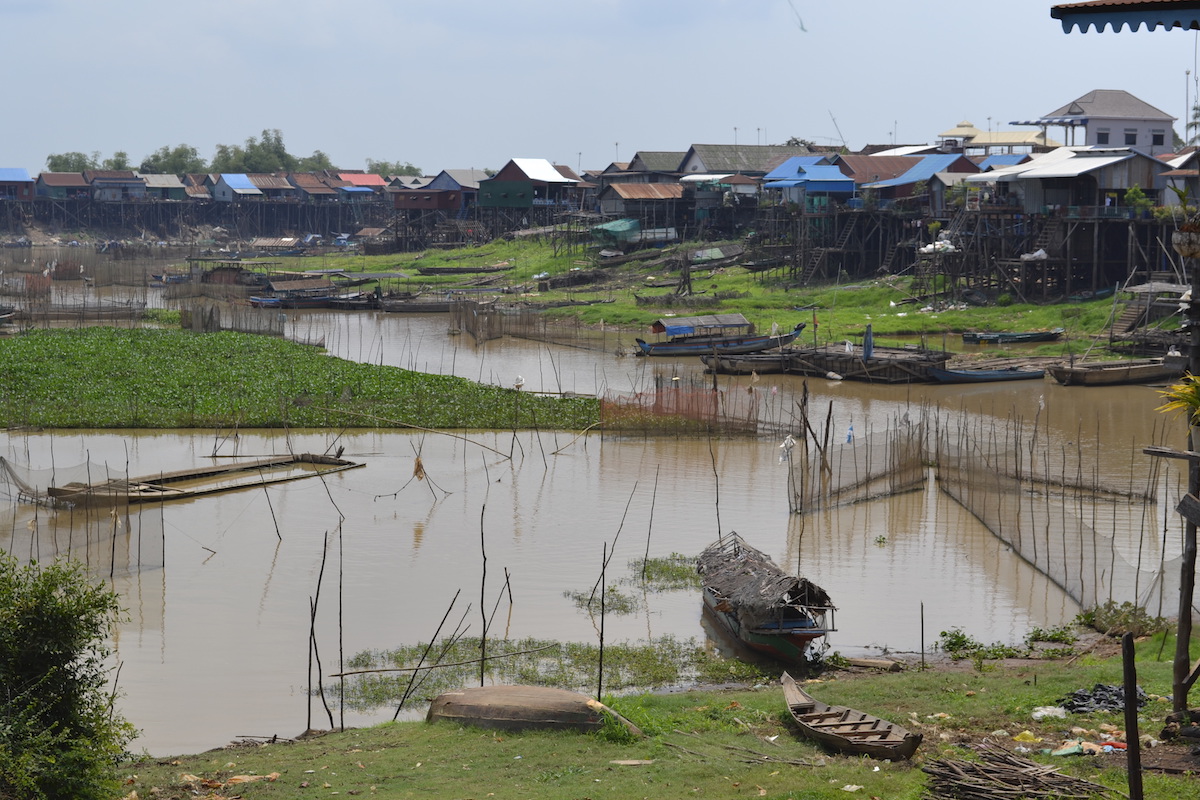
Angkor Wat
Days two and three (more like two and a half) in Cambodia were reserved for Angkor Wat, the huge temple complex next to Siem Reap. Being the former capital of the Khmer Empire, Angkor Wat is a unique destination in terms of architecture, history and pure beauty.

We spent as much time as we could in the area, and we definitely recommend it to everyone as one of the most impressive travel destinations in the world. We wrote this extensive spotlight on Angkor Wat, with details on the various temples and spots that you should visit during your trip.
Days 13-14: Phu Quoc
When planning the trip, we knew that we would be tired after two weeks of traveling, so we decided to end it with a few relaxing days at the beach. There was some back and forth on the max number of days we could spend like this without dying of boredom :) We ended up with 2.
So the next destination was Phu Quoc, Vietnam's biggest island. We stayed in a remote resort in the western part of the island, not even close to the main city, true isolation :) We had our own bungalow, very close to the sea.
Situated in the Gulf of Thailand, the island has fine sand and warm blue water. It's rightfully called Vietnam's Pearl Island. Swimming there was great both during the day and the night.
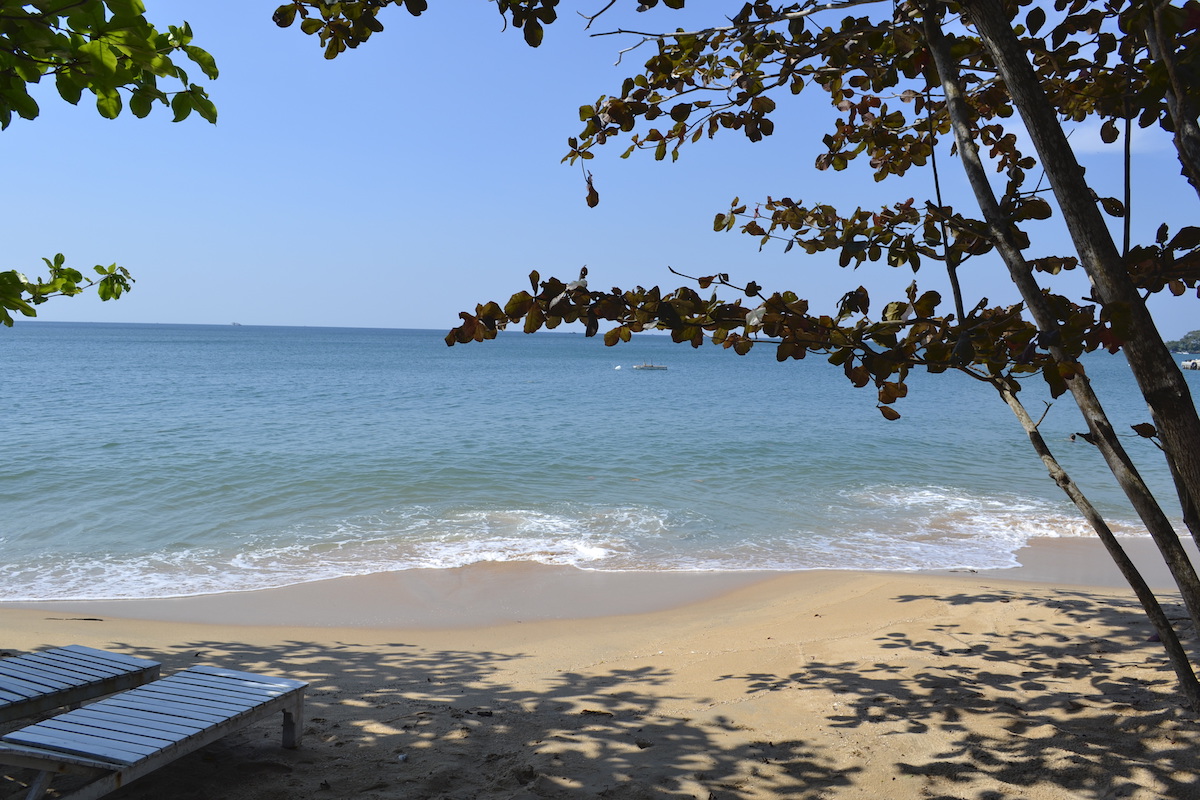
At about 1km away from the resort there was a beach that offered a very nice sunset view, with the sun disappearing into the sea. The beach was almost empty, and we were able to enjoy a very romantic sunset.
Day 15: Hanoi
After a well deserved break, we returned to Hanoi for our final day in Vietnam. We used this day to buy some souvenirs (read: a lot of coffee) and just enjoy our time in the capital. We ended up "climbing" (via an elevator) on the Lotte Observation Deck - a sky walk located at the 65th floor of the Lotte Tower.

In the evening, we did another tour of the old town trying to figure out how much more we understood about the Vietnamese culture after 2 weeks in the region. Also, we couldn't help but eat yet another bowl of pho!
Travel tips
As almost all our trips, this one was self-organized. We didn't know much about the region but we had some good recommendations and we did our research. Here are some of the things worth sharing, that might help you if you plan on visiting the region.
Visas
Both Vietnam and Cambodia require visas for a lot of foreign countries. Check if you need one in advance.
Vietnam has tourist visas with single and multiple entries, make sure you choose the right one depending on your itinerary. There are a lot of companies that take care of all the documentation. They send you the visa approval paper, together with exact instructions on the next steps that you need to take. Make sure to follow them to make the process smoother: have the required amount of cash upon arrival, along with two passport-size photos. We used Vietnam Visa Online and paid 26USD for each person. That is on top of the visa fee paid when you enter the country: around 25USD per person.
The Cambodian government has a website where you can apply for the visa directly. This is a straight-forward process. At the end, you receive a pdf via email where all the next steps are described (what to print, how many copies etc). The visa fee (36USD pp in our case) is paid online when applying for it.
Moving around
All of our internal flights in Vietnam and the flights between Vietnam and Cambodia were with Vietnam Airlines. It was a bit more expensive that some low cost carriers, but was worth it, as we had no issues, always left and arrived on time and our luggage arrived with us.
We did not travel with Vietjet, a low cost alternative, as we read about delays and canceled flights, and we didn't want to take that chance. A good way of saving money is to book multiple flights at the same time and pay the processing fee only once.
Also, be aware that a lot of people in Vietnam travel with their children. The flights are not necessarily quiet, but there is a lot of effort to keep the kids entertained, so it's not bad either.
To travel from the airport to the hotel we usually booked the trip in advance with the hotel staff. Beware that they don't send a taxi, they send a private car. The quality of the drive is better than with a regular cab, and it's also a bit more expensive. The average cost for such a ride is 15USD.
In Vietnam we used Uber, after figuring out that it's a lot cheaper than what the hotels offer. Just make sure to check if you want a car or a motorcycle.
In Cambodia, a tuk-tuk is also a very good option. Tuk-tuks are small motorcycles that are carrying a 4 seat coach and are pretty comfortable.
Money
In both Vietnam and Cambodia, you will need to change some money into the local currency. There are some places where you can pay in USD though, especially in Cambodia, as it is the preferred foreign currency.
In Vietnam, they have the Vietnamese Dong, but because of the past inflation, the numbers that they operate with are huge. 1 USD equals around 23000 VND. Check the exchange rate before going to an exchange office. As mentioned earlier, everything is negotiable in Vietnam, including this. Also, make sure you practice a bit in your head to understand how much something costs when you hear a price in VND. The locals tend to mislead first time visitors and get more money for the same good.
In Cambodia, the currency is called Riel. 1 USD equals around 4100 KHR. In Siem Reap, the 1 dollar bill will get you a lot of basic goods, and you can pay a lot more with USD compared to Vietnam. Expect to get the change in KHR though.
In both countries, prices are much cheaper than what western tourists are used to, so don't worry too much about being scammed as it won't be a fortune. As a rule of thumb, when bargaining with a shop owner in Vietnam, you can go as low as 40% of the initial offer, so don't be shy :)
Hotels
When researching for accommodation, we had two conditions: make sure it's well located and clean. The average prices are quite low compared to the European ones: around 35USD / double room / night. Don't go for lower than that, as some hotels can be quite sketchy. Of course, there are a lot of luxury hotels as well, but we preferred to spend the money elsewhere.
For their services especially, we highly recommend La Selva hotel in Hanoi. We stayed there for just one night, because they had no room available for the night between our trips to Sapa and Ha Long Bay. They moved our luggage from one hotel to the other at no extra cost and they were very helpful with any question we had.
Shadow Angkor Residence in Siem Reap was the best we had during our entire trip. Very clean, air-conditioned room and very good services offered by the staff.
All hotels have safe boxes. Make sure to use them, it's a lot easier to walk around in the crowds without worrying about your passports or money. We had a few copies of our passports with us all the time. They also come in handy as some hotels need to keep either the passport or a copy of it for the duration of your stay.
Food
Food in Vietnam is a-ma-zing. You need to try at least the traditional vietnamese pho soup and spring rolls - they come in different options: fresh or deep fried, vegetarian or with meat. Also, coconut water drank straight from the coconut is very refreshing during the hot days.

In Cambodia, you will be able to try a lot of strange things, like bugs, snakes and other creatures. Let's say we weren't hungry enough to try them :)
Especially in the tropical areas, make sure you stay hydrated. That means drinking water and also eating salty foods, which will make you drink even more water. Soy sauce is your friend.
Tap water is usually not safe to drink. Make sure you have bottled water with you at all times (the hotels offer a few bottles a day, and all the tours you book have that covered).
Other recommendations
Make sure to pack a sun protection cream with a high SPF (at least 30) because the sun really is burning. Also, an insect repellent is very useful, but you can find very good ones there (a lot better than the one we packed).
To learn more about the region, here are some book recommendations:
- Catfish and Mandala: A Two-Wheeled Voyage Through the Landscape and Memory of Vietnam by Andrew X. Pham
- Pierdut în Vietnam & Cambodgia by Cătălin Vrabie (this in only in Romanian)
If you prefer watching something then:
- The Vietnam War is probably one of the best war documentaries ever made
- First They Killed My Father tells the tragic and real story of the Cambodian massacre under the Khmer Rouge.
Closing note
It's probably clear by now that we had a great time exploring Vietnam and Cambodia.
We went for the history, the architecture and the nature. We came back with cultural richness and great memories of all the wonderful people we met. We were curious about the local culture, and people were always open about it. The fact that we learned a few words in the local language (how to say hello and thank you) also helped, especially with the people that did not speak English but were trying to.
We hope this itinerary inspires you to visit this part of the world. We also hope to go back there some day in the not too distant future :)